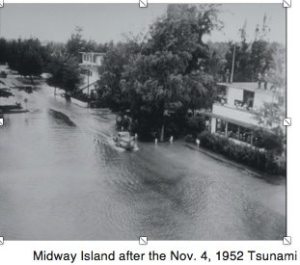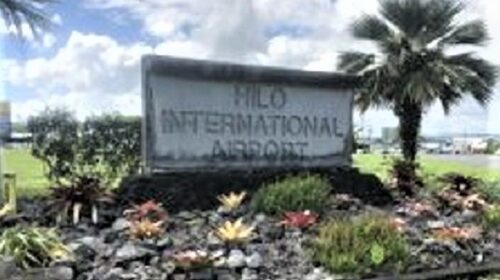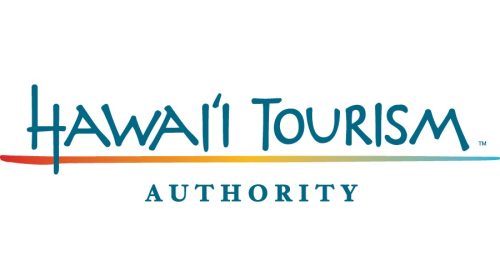Nuclear Bombs in the Pacific Ocean
“Hawaii is the first state to prepare the public for the possibility of a ballistic missile strike from North Korea.” Hawaii Civil Beat July 21, 2017
The state’s Emergency Management Agency announced a public education campaign about what to do. Informational brochures, along with TV, radio and internet announcements will help educate the public about the new siren sound and provide preparedness guidance. “If they’re not educated, they could actually be frightened by it,” agency Executive Director Toby Clairmont said.
When one lives on an Island in the middle of the Pacific Ocean what happens in that Ocean has to be of paramount importance.
Experts state that would take a missile 15 minutes — maybe 20 minutes — to arrive. Arrive where? Suppose the missile were to drop into the ocean?
Have our experts told us anything about dropping missiles into the Pacific Ocean?
Let me tell you a story that is seldom if ever told. On November 1, 1952, the United States detonated what was billed as “the first hydrogen bomb of the world” in the Marshall Islands. And the United States attempted to keep the bombing a secret. After all no one in American could pronounce Eniwetok Atoll, or knew the Marshall Island’s existed or cared.
There were forty named islands comprising Eniwetok Atoll before the “Mike” test. The test completely vaporized the island of Elugelab as well as portions of Sanil and Teiter, leaving a crater 164 feet (50 meters) deep and 1.2 miles (1.9 kilometers) wide.” Credit: U.S. Air Force
“In addition to the damage and fallout from Mike, there was a Pacific wide Tsunami, which traveled from the Marshall Islands to the Kamchatka peninsula, down to Japan and back across the Pacific as far as the north shore of O’ahu, Hawai`i.” Richard U. Conant
Midway Island after the Nov. 4, 1952 Tsunami
Was Ivy Mike the first hydrogen bomb as we were told? Of course not.
First test of a hydrogen bomb took place in Alaska on April 1, 1946
After World War II, Alaska was chosen as the favorite site of the Pentagon for testing nuclear weapons. It was near Russia so the fallout would contaminate Siberia and remote enough from the mainland U.S. to hide the effects of the “shots” or testing. The coordinator of Alaska nuke testing was Dr. Edward Teller—the so-called “father of the H-bomb:”
April 1, 1946 “One of the most destructive Pacific-wide tsunamis was generated by a magnitude 7.8 earthquake near Unimak Island in Alaska’s Aleutian Island Chain. A huge wave of 35 meters destroyed completely the U.S. Coast Guard’s Scotch Cap lighthouse on Unimak and killed all five of its occupants. Without warning, destructive tsunami waves reached the Hawaiian Islands, five hours later, causing considerable damage and loss of life. The waves completely obliterated Hilo’s waterfront on the island of Hawaii, killing 159 people there. Altogether a total 165 people lost their lives from this tsunami, including children attending school at Hawaii’s Laupahoehoe Point, where waves reaching up to 8 m destroyed also a hospital. Damage was estimated at $26 million (in 1946 dollars). (Intl. Tsunami Info. Center).
Third explosion of hydrogen bomb took place in Alaska on March 9, 1957
The Pentagon set off a BIG ONE on March 9, 1957 in Alaska. This was probably in connection with Operation Dropshot—the planned invasion of Russia set for 1958:
“On March 9, 1957, an 8.3 magnitude earthquake south of the Andreanof Islands, in the Aleutian Islands of Alaska – in the same general area as that of April 1, 1946 – generated a Pacific-wide tsunami. Although no lives were lost, there was extensive destruction of property in the Hawaiian Islands, with damage estimated at approximately $5 million (1957 dollars).
The waves were particularly high on the north shore of the island of Kauai where they reached a maximum height of 16 meters, flooding the highway and destroying houses and bridges. This was twice the height of the 1946 tsunami.
At Hilo, Hawaii, the tsunami runup reached 3.9 m and there was damage to numerous buildings along the waterfront. Within Hilo Bay, Coconut Island was covered by 1 m of water and the bridge connecting it to the shore, as in 1952, was again destroyed.”(Intl. Tsunami Info. Center).
Information on the Ivy Mike shot wasn’t released until nearly two years after it was detonated, which is a long time to try to keep something that big secret.
Beverly Keever, PhD, UH Professor Emiratis authored a book “News Zero” criticizing The New York Times coverage of the United State’s nuclear weapons testing in the Pacific before and during the Cold War era. Beverly Keever said the newspaper was never a challenge to the U.S. government’s policy but deliberately suppressed information to its readers about the number and yield of the tests.
According to Keever’s research, the newspaper only reported 56percent of the 86 tests that the United States conducted in the Pacific between1946 and 1962. Keever said that despite having an award-winning science writer on staff, the Times did little to explain the tests’ long-term health and environmental effects.




